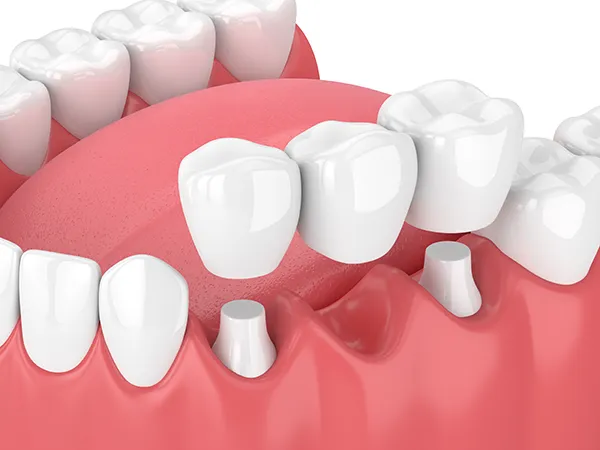Dental BridgesGeorgetown - Giddings - Wells Branch Our teeth are very important, in that they help us bite, eat, speak, and smile. They are among the first features noticed by others, and they allow us to express ourselves. There can be many reasons for losing teeth. Children lose teeth as their permanent teeth erupt into place. Adults do not tend to lose their teeth until a more advanced age, but certain factors, both controllable and uncontrollable, can cause one to lose their teeth. When this happens, it can leave you in some discomfort, as the neighboring teeth try to fill in space. Furthermore, it can reduce self-esteem. Fortunately, dental bridges allow you to regain your smile and confidence. Our team here at Viva Smiles Family Dental specializes in bridges and is ready to help you with any questions. Our teeth are very important, in that they help us bite, eat, speak, and smile. They are among the first features noticed by others, and they allow us to express ourselves. There can be many reasons for losing teeth. Children lose teeth as their permanent teeth erupt into place. Adults do not tend to lose their teeth until a more advanced age, but certain factors, both controllable and uncontrollable, can cause one to lose their teeth. When this happens, it can leave you in some discomfort, as the neighboring teeth try to fill in space. Furthermore, it can reduce self-esteem. Fortunately, dental bridges allow you to regain your smile and confidence. Our team here at Viva Smiles Family Dental specializes in bridges and is ready to help you with any questions.What Are Dental Bridges and Who Can Benefit From Them?Bridges are like crowns in that they are artificial teeth shaped to your mouth. With bridges, however, it is typically two teeth or more included to officially be part of a bridge. There are two base teeth that will be shaved into small stumps which the bridge will be placed on (hence, the name "bridge"). These two teeth are called abutment teeth. If teeth are missing, implants will substitute as the stumps or abutment teeth. Most with missing teeth can benefit from dental bridges. While a missing tooth initially may hurt a lot, it can also lead to misalignment of the surrounding teeth as well. By not having a tooth on either side, space where the missing tooth once was can become a sinking void where the other teeth will start to fall into. If there are more than two teeth missing, your actual speech can also change. Furthermore, anyone who has sustained reduced self-confidence due to missing teeth would also benefit from bridges, as they can completely restore your smile, as they blend in naturally with your surrounding teeth. Types of Dental BridgesThere are four main types of dental bridges, each with their specific and designated use and features. Traditional dental bridges are for those who have natural teeth on either side of the gap where teeth are missing. The set of teeth replacing the missing teeth are the bridge, and this is the most common dental bridge. Another type of bridge is the cantilever bridge. Cantilever dental bridges are unique and do not follow the double abutment tooth bridge design. These work by having only one abutment tooth that holds up the entirety of the bridge. While less common, Maryland bridges are also an option for patients. Maryland dental bridges fill in the missing gap and are bonded onto the inner-facing backs of teeth with either metal or ceramic. Finally, implant-supported bridges are a fantastic option for patients. Implant-supported dental bridges are for those who need implants and want to fill in the gap with a bridge. It is similar to traditional bridges, but the abutment teeth are implanted instead of being natural teeth. Missing teeth can cause a lot of discomfort. Fortunately, dental bridges can fill in those gaps and return a natural speech pattern, regular comfortable chewing, and of course, a beautiful smile. If you have any questions regarding dental bridge treatments, do not hesitate to call us here at Viva Smiles Family Dental at (512) 863-9555 today. |